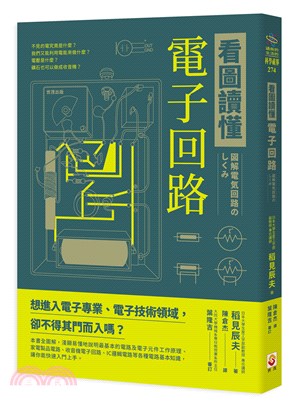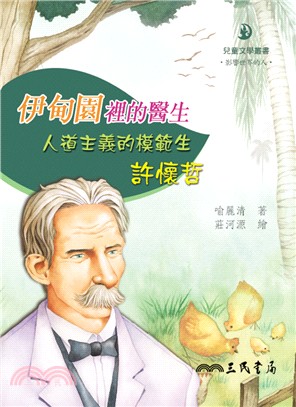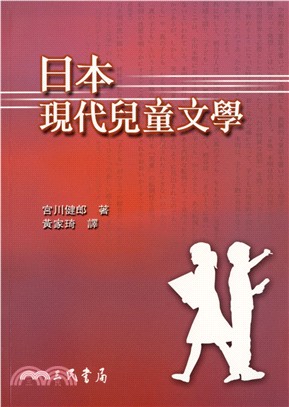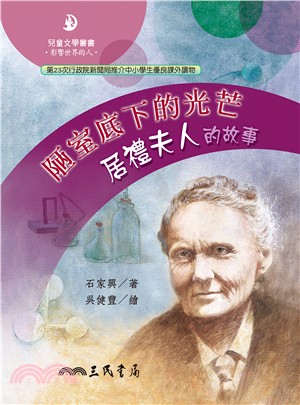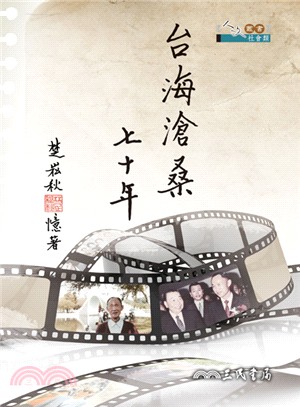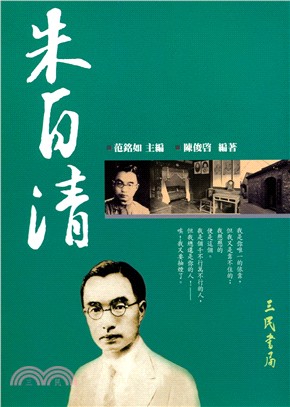MULTIMEDIA ON SYMBIAN OS - INSIDE THE CONVERGENCE DEVICE
商品資訊
相關商品
商品簡介
作者簡介
目次
商品簡介
Multimedia on Symbian OS is the only book available to discuss multimedia on Symbian OS at this level. It covers key areas of multimedia technology, with information about APIs and services provided by Symbian OS. Other key features include details of UI platform-specific APIs from S60 and UIQ.
This pioneering book covers each of the key technologies available (such as audio, video, radio, image conversion, tuner and camera) at a high level, to give the reader context, before drilling down to details of how to use each of them. The book includes code samples which are available for download on a website and cover key APIs with detailed description of each. Additional information includes the evolution of multimedia on Symbian OS from previous versions to the current (v9.5) and plans for the future.
Chapters include:
Architecture of Multimedia on Symbian OS
Onboard Camera
Multimedia Framework of both Video & Audio
Image Converter Library
The Tuner
This pioneering book covers each of the key technologies available (such as audio, video, radio, image conversion, tuner and camera) at a high level, to give the reader context, before drilling down to details of how to use each of them. The book includes code samples which are available for download on a website and cover key APIs with detailed description of each. Additional information includes the evolution of multimedia on Symbian OS from previous versions to the current (v9.5) and plans for the future.
Chapters include:
Architecture of Multimedia on Symbian OS
Onboard Camera
Multimedia Framework of both Video & Audio
Image Converter Library
The Tuner
作者簡介
Adi Rome has a BA in Computer Science from Tel Aviv University. After a spell in teaching, she worked in Quality Assurance, moving to analysis, design and implementation of embedded systems, before joining Symbian in 2004. As the multimedia guru within the Developer Services team she provides technical consultancy across all areas of Symbian OS, with special emphasis on hardware. Adi was responsible for communicating Symbian's roadmap to silicon and multimedia partners, and also led Symbian's component validation program. Away from technical work Adi has been involved in setting up the Symbian China partner-consulting organization and is in much demand for her presentation skills, having given sessions at a wide range of partner and industry events, including 3GSM World Congress.
Mark Wilcox has been playing with computers since his dad bought a ZX81 when he was four. He wrote his first multimedia application (a three room text adventure with sound effects!) on an Acorn Electron when he was seven. Mark has a Masters degree in Mathematics, following this up with a research postgraduate in Cybernetic Intelligence. In 2001 he started developing software for mobile phones and since then has been involved in handset development projects for Ericsson, Fujitsu, Nokia, Panasonic and Samsung. During this time he’s worked on everything from a GPRS stack, device drivers and a power management server to messaging applications and the code that draws the soft keys. It was while working as a Software Architect for Nokia’s Multimedia business unit, developing their flagship Nseries products, that Mark developed his interest in the multimedia capabilities of Symbian OS. Mark became an Accredited Symbian Developer and a Forum Nokia Champion in 2007.
Mark Wilcox has been playing with computers since his dad bought a ZX81 when he was four. He wrote his first multimedia application (a three room text adventure with sound effects!) on an Acorn Electron when he was seven. Mark has a Masters degree in Mathematics, following this up with a research postgraduate in Cybernetic Intelligence. In 2001 he started developing software for mobile phones and since then has been involved in handset development projects for Ericsson, Fujitsu, Nokia, Panasonic and Samsung. During this time he’s worked on everything from a GPRS stack, device drivers and a power management server to messaging applications and the code that draws the soft keys. It was while working as a Software Architect for Nokia’s Multimedia business unit, developing their flagship Nseries products, that Mark developed his interest in the multimedia capabilities of Symbian OS. Mark became an Accredited Symbian Developer and a Forum Nokia Champion in 2007.
目次
Foreword.
About this Book.
Authors’ Biographies.
Authors’ Acknowledgements.
Symbian Press Acknowledgments.
Code Conventions and Notations.
1 Introduction.
1.1 The Convergence Device.
1.2 Transformation of the Media Industry.
1.3 Symbian OS.
1.4 The Cutting Edge.
1.5 Evolution of the Multimedia Subsystem in Symbian OS.
1.6 A Peek into the Future.
2 Multimedia Architecture.
2.1 The ECOM Framework.
2.2 Platform Security.
2.3 The Content Access Framework.
2.4 Multimedia Subsystem.
2.5 Future Multimedia Support.
3 The Onboard Camera.
3.1 Introduction.
3.2 Accessing the Camera.
3.3 Camera Control.
3.4 Displaying the Viewfinder.
3.5 Capturing Still Images.
3.6 Capturing Video.
3.7 Error Handling.
3.8 Advanced Topics.
4 Multimedia Framework: Video.
4.1 Video Concepts.
4.2 Symbian OS Video Architecture.
4.3 Client API Introduction.
4.4 Identifying Video Controllers.
4.5 Controlling Video Playback.
4.6 Controlling Screen Output.
4.7 Getting Video Information.
4.8 Accessing Metadata.
4.9 Controlling the Audio Output.
4.10 Streaming Playback.
4.11 Recording Video.
4.12 Controlling the Video that Is Recorded.
4.13 Controlling the Audio that Is Recorded.
4.14 Storing Metadata.
4.15 Custom Commands.
4.16 Examples and Troubleshooting.
5 Multimedia Framework: Audio.
5.1 Introduction.
5.2 Audio Input and Output Streams.
5.3 Audio Player Utility.
5.4 Audio Recorder Utility.
5.5 File Conversion.
5.6 Tone Utility.
5.7 DevSound.
5.8 Audio Policies.
5.9 Priority Settings.
5.10 Miscellaneous.
6 Image Conversion Library.
6.1 Introduction.
6.2 Decoding Images.
6.3 Encoding Images.
6.4 Displaying Images.
6.5 Transforming Images.
6.6 Native Bitmap Operations.
6.7 Miscellaneous APIs.
7 The Tuner API.
7.1 Introduction.
7.2 Getting Started.
7.3 Basic Use Cases.
7.4 Future Technologies.
7.5 Sample Code.
8 Best Practice.
8.1 Always Use an Active Scheduler.
8.2 Use APPARC to Recognize Audio and Video.
8.3 Don’t Use the Video Player to Open Audio Files.
8.4 Know that MMF and ICL Cannot Detect Some Formats.
8.5 Don’t Use CMdaAudioOutputStream for Network Streaming.
8.6 Use CMdaAudioPlayerUtility to Play Tone Sequence Files.
8.7 Use CMdaAudioPlayerUtility to Play Clips.
8.8 Don’t Hardwire Controller UIDs in Portable Code.
8.9 Set Controller Thread Priorities Before Playing or Recording.
8.10 Recognize that Behavior Varies when Several Clients Are Active.
8.11 Understand that the System is Based on Plug-ins.
8.12 Use RFile and TMMSource Instead of Passing a File Name.
8.13 Consider the Volume Control.
8.14 Know When to Use Threaded Requests on ICL.
8.15 Don’t Have too many Clients.
8.16 Understand the Multi-heap Problem.
References and Resources.
Index.
About this Book.
Authors’ Biographies.
Authors’ Acknowledgements.
Symbian Press Acknowledgments.
Code Conventions and Notations.
1 Introduction.
1.1 The Convergence Device.
1.2 Transformation of the Media Industry.
1.3 Symbian OS.
1.4 The Cutting Edge.
1.5 Evolution of the Multimedia Subsystem in Symbian OS.
1.6 A Peek into the Future.
2 Multimedia Architecture.
2.1 The ECOM Framework.
2.2 Platform Security.
2.3 The Content Access Framework.
2.4 Multimedia Subsystem.
2.5 Future Multimedia Support.
3 The Onboard Camera.
3.1 Introduction.
3.2 Accessing the Camera.
3.3 Camera Control.
3.4 Displaying the Viewfinder.
3.5 Capturing Still Images.
3.6 Capturing Video.
3.7 Error Handling.
3.8 Advanced Topics.
4 Multimedia Framework: Video.
4.1 Video Concepts.
4.2 Symbian OS Video Architecture.
4.3 Client API Introduction.
4.4 Identifying Video Controllers.
4.5 Controlling Video Playback.
4.6 Controlling Screen Output.
4.7 Getting Video Information.
4.8 Accessing Metadata.
4.9 Controlling the Audio Output.
4.10 Streaming Playback.
4.11 Recording Video.
4.12 Controlling the Video that Is Recorded.
4.13 Controlling the Audio that Is Recorded.
4.14 Storing Metadata.
4.15 Custom Commands.
4.16 Examples and Troubleshooting.
5 Multimedia Framework: Audio.
5.1 Introduction.
5.2 Audio Input and Output Streams.
5.3 Audio Player Utility.
5.4 Audio Recorder Utility.
5.5 File Conversion.
5.6 Tone Utility.
5.7 DevSound.
5.8 Audio Policies.
5.9 Priority Settings.
5.10 Miscellaneous.
6 Image Conversion Library.
6.1 Introduction.
6.2 Decoding Images.
6.3 Encoding Images.
6.4 Displaying Images.
6.5 Transforming Images.
6.6 Native Bitmap Operations.
6.7 Miscellaneous APIs.
7 The Tuner API.
7.1 Introduction.
7.2 Getting Started.
7.3 Basic Use Cases.
7.4 Future Technologies.
7.5 Sample Code.
8 Best Practice.
8.1 Always Use an Active Scheduler.
8.2 Use APPARC to Recognize Audio and Video.
8.3 Don’t Use the Video Player to Open Audio Files.
8.4 Know that MMF and ICL Cannot Detect Some Formats.
8.5 Don’t Use CMdaAudioOutputStream for Network Streaming.
8.6 Use CMdaAudioPlayerUtility to Play Tone Sequence Files.
8.7 Use CMdaAudioPlayerUtility to Play Clips.
8.8 Don’t Hardwire Controller UIDs in Portable Code.
8.9 Set Controller Thread Priorities Before Playing or Recording.
8.10 Recognize that Behavior Varies when Several Clients Are Active.
8.11 Understand that the System is Based on Plug-ins.
8.12 Use RFile and TMMSource Instead of Passing a File Name.
8.13 Consider the Volume Control.
8.14 Know When to Use Threaded Requests on ICL.
8.15 Don’t Have too many Clients.
8.16 Understand the Multi-heap Problem.
References and Resources.
Index.
主題書展
更多
主題書展
更多書展本週66折
您曾經瀏覽過的商品
購物須知
外文書商品之書封,為出版社提供之樣本。實際出貨商品,以出版社所提供之現有版本為主。部份書籍,因出版社供應狀況特殊,匯率將依實際狀況做調整。
無庫存之商品,在您完成訂單程序之後,將以空運的方式為你下單調貨。為了縮短等待的時間,建議您將外文書與其他商品分開下單,以獲得最快的取貨速度,平均調貨時間為1~2個月。
為了保護您的權益,「三民網路書店」提供會員七日商品鑑賞期(收到商品為起始日)。
若要辦理退貨,請在商品鑑賞期內寄回,且商品必須是全新狀態與完整包裝(商品、附件、發票、隨貨贈品等)否則恕不接受退貨。














